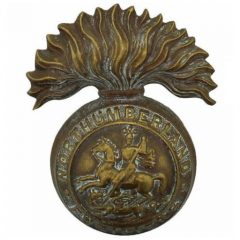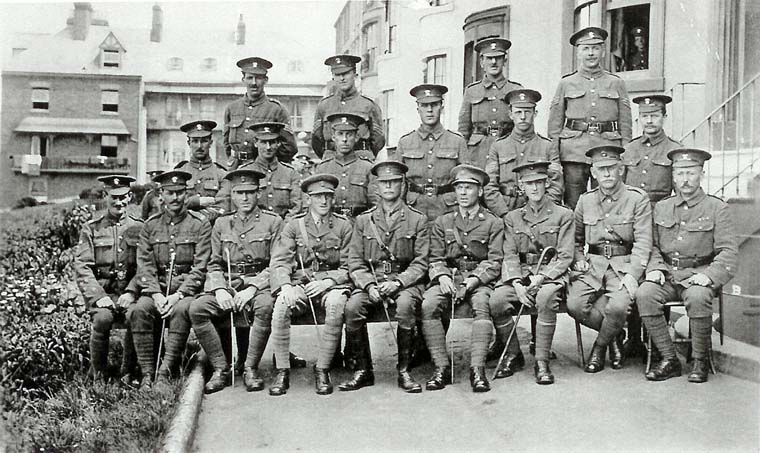1 Nov 1860 - 10 Jul 1874 - Lt Col. The Earl of Tankerville
Charles Augustus Bennet (1810-1899) styled Lord Ossulston between 1822 and 1859, was a British peer and Conservative politician. He served as Captain of the Honourable Corps of Gentlemen-at-Arms between 1866 and 1867 and as Lord Steward of the Household between 1867 and 1868.The family seat was Chillingham Castle
11 Jul 1874 - Dec 1879 - Col. The Earl of Durham
George Frederick D’Arcy Lambton (2nd Earl of Durham)
1828-1879
21 Feb 1880 - 6 Sep 1881 - Lt Col. J Nicholson
7 Sep 1881 - 20 May 1887 - Lt Col. The Right Honourable Frederick William Lambton (4th Earl of Durham) (1855-1929)
(19 June 1855 – 31 January 1929) was a British peer, a Liberal (and later Liberal Unionist) politician, and the son of George Lambton, 2nd Earl of Durham. He inherited the Earldom from his twin brother, John Lambton, 3rd Earl of Durham, when the latter died with no legitimate children.
21 May 1887 - 7 May 1892 - Col. William Lisle Blenkinsopp Coulson(1840-1911)
The Coulson family owned property on and around the line of Hadrian’s Wall. William had restored and extended Blenkinsopp Castle, one of the family’s medieval homes, in 1877 (it was destroyed by fire in the 1950s).
He was a prominent figure in the area, known for his 'untiring efforts for the kindly treatment of animals' and for the unusual plaid that he habitually dressed in. Born in Haltwhistle, he served in the army from 1860 to 1892, retiring as a colonel. Subsequently he served as a magistrate and on the boards of many charities concerning themselves with child and animal welfare. He toured schools and borstals throughout the country giving lectures on morality, and published essays on the welfare of children and women, and 'Musings on Moor and Fell'. He died in Newbrough, Northumberland, leaving a wife and daughter.
Tyneside Dail Photo
17 Sep 1892 - 1 Jan 1900 - Col. Robert Weddell VD
Robert was a member of the original volunteer force and died in Berwick in February 1909. He entered as a bugler boy and served for mora than forty years, never missing a camp. He was a solicitor, and sometimes town clerk for Berwick and election agent to Sir Edward Orey.
2 Jan 1901 - 1 Feb 1907 - Col. Wilfrid Gibson VD
The Hexham firm of Gibson & Co was founded in 1815 by Jasper Gibson and in 2011 it was England's oldest family-run solicitors' practice; with offices in Hexham, Bellingham and Newcastle.
Wilfrid Gibson (b.1850), the great great grandson of Jasper, was born in Salford and educated at Ushaw. He married (m.1874) Ann Margaret Dees and their first child Bertrand Dees Gibson was born in 1876. In 1881 the family was residing at Acomb House, Acomb and Wilfrid was a practising solicitor and a Captain in the 1st VB NF. During his career Wilfrid was Treasurer of St Cuthbert's Society; Member of Catholic Education Council; Vice- President of the Hexham and Newcastle Voluntary Schools Association. Wilfrid attained the rank of Lt Col and commanded the 1st VB from 1901.
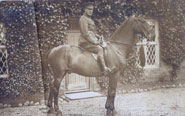
1907 - 14 Apr 1910 - Col. Lewis Chalmers Lockhart VD
In 1914 Lewis Chalmers Lockhart, (Lockhart LC & HK) was a dynamic solicitor, who in addition to holding a commission in the Fusiliers was leading figure in Hexham society. Throughout his life he was activily involved in a number of the town’s affairs; commissioner toadminister oaths in the Supreme Court of Judicature, registrar of the county court, clerk to the managers of Hexham Council Schools and treasurer to the Hexham Union Workhouse and Rural District Council. Lewis owned several Hexham properties including the Old Gaol, the Manor Office and the Moot Hall. He cared deeply about education and was a prime mover of the scheme to shift the old Hexham Grammar School to a larger site in Fellside. Lewis was also renowned for falling out with Canon Sidney Savage over the plans to rebuild Hexham Abbey chancel. Along with his brother he was responsible for the construction of the Alemouth Road almshouses to commemorate his uncle, Henry King. (Kelly's Directory, p. 166) (Hexham Courant, 2009)
His son Henry followed into the same profession. (Kelly's Directory, p. 166). (Hexham Courant, 2009).
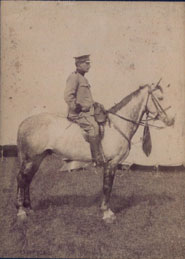
14 Apr 1910 - 13 Feb 1912 - Col. John McClare Clark VD
Unlike many of his contemporaries John McClare Clark (b.1854) was Haltwhistle born and bred. He followed in his father’s footsteps as a land agent, but he was also the manager of the Haltwhistle branch of the London Joint Stock Bank Ltd.
In his time he was also treasurer to Haltwhistle Rural District Council, treasurer of the Haltwhistle Union Workhouse, Justice of the Peace (JP) and magistrate for the Haltwhistle Petty Session (Kelly's Directory)
John married Marion, one of Hexham doctor Daniel Jackson’s ten daughters. Daniel was a highly regarded Hexham general practitioner, a district health officer and the owner of Bellister Castle. Daniel completed the restoration and enlargement of the castle before his death in 1911 and John and Marion McClare resided there. Daniel’s son Scott was a GP with a practice in Alnwick and held a commission in the 7th NF. John was listed in the London Gazette of 30 Dec 1902:
War Office, 30th December, 1902.
The KING has been graciously pleased to confer the Volunteer Officers' Decoration upon the undermentioned Officers of the Volunteer Force, who have been duly recommended for the same under the terms of the Royal Warrant dated 25th July, 1892 :— NORTH-EASTERN DISTRICT.
RIFLE. 1st Volunteer Battalion, The Northumberland Fusiliers.
Major George Hogarth Bell.
Major John McClare Clark.
Appeared in the London Gazette again on 29 September 1908
4th Battalion, Northumberland Fusiliers; the undermentioned officers, from the 1st Volunteer Battalion, The Northumberland Fusiliers, to be Lieutenant-Colonels with the honorary rank of Colonel, with precedence as in the Volunteer Force. Dated 1st April. 1908 : —
Lieutenant-Colonel Commandant and Honorary Colonel Lewis Chalmers Lockhart.
Lieutenant-Colonel and Honorary Colonel John McClare Clark.
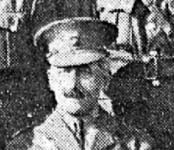
19 Jul 1913 - 17 Aug 1915 - Lt Col. Alfred James Foster
It is not clear how he first became involved in the lead manufacturing business; however Alfred’s grandfather James (b.1819) was the joint managing partner in the Tyneside firm of Locke & Blackett until 1856. The family then moved to Sussex, but returned to Tyneside in 1862 whereupon James set up the rival lead manufacturing plant of Foster, Blackett & Wilson at Hebburn in partnership with Robert Blackett and John Wilson . The company specialised in the production of white, red and orange lead as well as chemical sheet lead and lead pipes .
In 1871 seven year old Alfred (b.1864) was boarding at ‘The Mount School’ in Northallerton. His father James was listed in the census as a ‘Lead Refiner and Manufacturer’ employing 198 men and 102 women.
In 1874 James purchased the Hindley Hall estate near Stocksfield and relocated his family from Newcastle. On his death, five years later, the family moved into Hindley House, a smaller property on the estate, and rented the Hall out to colliery owner Matthew Liddell and family.
The 1891 Census lists Alfred as a Lead Manufacturer and Magistrate. He was now married to Mabel and along with his two children, was living in Hindley House along with five servants and a nurse. The Hall itself was still occupied by Matthew Liddell, his wife Hannah, one daughter and seven servants including a governess. The Liddells were colliery owners and philantropists in nearby Prudhoe. Matthew Liddell's father had bought three hundred acres in Prudhoe upon which he built Prudhoe Hall (more recently Prudhoe Hospital).
Alfred continued with the lead manufacturing business, but in another house move, probably linked to the general downturn in the fortunes of the lead manufacturing industry towards the end of the 19th Century, the family took up residence in Anick Cottage, a more modest property on the North bank of the Tyne, purchased from Mrs Isabel Clayton of ‘The Chesters’.
By 1903 the Liddells had relocated to Cheeseburn Grange, Stamfordham and the Richardsons had taken up residence in the Hall. John Wigham Richardson’s (1837-1908) father owned and ran a leather tanning business, but John was to make his fortune in the shipbuilding industry and founded the Neptune Works at Walker-on-Tyne. John’s first move up the property ladder occurred in 1866, when he moved his family from Elswick to Wingrove House, Fenham. The subsequent move to Hindley Hall coincided with a merger between the Neptune works and the Swan Hunter yard. The new company, Swan Hunter & Wigham Richardson, became the most technically advanced ship building firm in the world and one of it most famous products, was the Cunard line’s RMS Mauretania, launched in 1906 (Wikipedia). The Richardson’s occupation of Hindley Hall was shortlived, the Fosters finally selling the Hindley estate to the Pumphrey family in 1907 (Baker A. P.).
Led the battalion into battle at Ypres during April 1915. However, he fell ill during July 1915 and returned to England to convalesce.
Appointed Deputy Assistant Director at the Ministry of Munitions 16th Sep 1915.
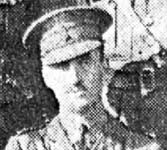
18 Aug 1915 - 1917 - Maj. (Temporary Lt Col.) Bernard Dees Gibson
Bertrand was admitted to the Bar in October 1899 and joined his father in practice as W. & B. D. Gibson, Hexham. Bertrand was also commissioned into the 1st VB and married in 1907 at Kingston, Middlesex. .
Gibson joined the old 1st Volunteer Battalion in 1900, and after passing through the Musketry Course at Hythe, was appointed Musketry Instructor to the Battalion. In 1906, he became Hon. Secretary to the Northumberland Rifle Association. He was mobilised in August 1914, embarked for France with his Battalion in April 1915, and promoted Lt Col in August 1915 to command the 4th NF. Promoted substantive Lt Col in March 1918. Bertrand was ‘Mentioned in Dispatches’ four times in all, awarded the D.S.O. and the Croix de Guerre with Palms (French)
1917 - 1917 - Capt. (Temporary Maj.) James Allan Herriott
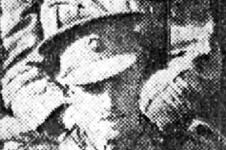
1917 - 1917 - Lt (Temporary Capt) Cecil George Arkwright
Cecil’s father was a mechanical engineer originating from Barthomley in Cheshire. Cecil was born in Newcastle. At the time of the 1901 Census the family was living at 68 Park Road, Elswick, but Cecil was boarding at Sea Bank School in Alnmouth. Cecil was the Great Great Great Grandson of Sir Richard Arkwright the inventor of the Spinning Jenny.
Born 1890 and married Mary Adeline, 4th daughter of the late Col.W.H.S. Heron-Maxwell of Teviot Bank, Roxburgh. Went to reach rank of Lt Col. and was awarded the MC.
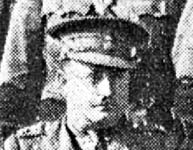
1917 - 1917 - Capt. (Temporary Lt Col.) Francis Robinson
Frank (b.1885) was the eldest son of John William and Elizabeth Anne Robinson. The Robinson’s drapery business was on Fore Street in Hexham. His father and grandfather had been drapers. Francis was at Cambridge University in 1901 (1901 Census)
Lt. Col. Frank Robinson succeeded Colonel M.C. Lake as the commander of the Aden Protectorate Levies (APL) in 1929; a post he was to occupy until 1939. In 1928, when he first arrived, the APL comprised two British officers and six platoons of Arabs (each one officer and thirty four men) recruited from tribes in the Western Protectorate states, they had 48 camels and 8 mules. The APL recruited from various tribes living in the foothills and the higher mountainous regions of the protectorate. (Pickering) Aden Airways
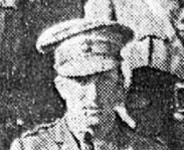
1917 - 22 Mar 1918 - Capt. (Temporary Lt Col.) William Robb
The Robb brothers were born in Hexham and educated at George Watson’s Boy’s College in Edinburgh, where all three served in the school Officer Training Corps. In 1907 William was gazetted as a 2nd Lt in the 1st Volunteer Battalion, NF and John Ridley joined the 4th NF in March 1909. Both were promoted to full lieutenant in June 1910, then captain in Dec 1912. They were mobilised in August 1914 and served to the end of the war.
William made a career out of the army, taking a regular commission in the King’s Own Yorkshire Light Infantry. He later served as the Commanding Officer of the North Staffordshire Regiment and was the Brigadier commanding the 9th Infantry Brigade in the British Expeditionary Force during WW2.
22 Mar 1918 - 27 Mar 1918 - Capt. Thomas Alexander Lacy-Thompson
Thomas was the great grandson of James Thompson. The Thompson family lived at Farlam Hall on Lord Carlisle’s estate. James Thompson’s keen activity and interest in the progressive development in the Naworth coalfield and waggonway was to stand him in good stead for in 1819 he was to succeed Thomas Lawson and become Lord Carlisle’s colliery agent. (Gordon, p. 6). In 1838 James became the lessee of the waggonways and the coalfield. On his death in 1851 his wife Maria took control of the business, assisted by two of her sons, George Africanus and Thomas Charles. Maria passed away in 1891 and the lease was seen out by Charles Lacy Thompson (b.1857) and James Thomas Thompson, the sons of Thomas Charles Thompson who had married Gertrude Lacy Thompson. By the end of the 19th century the Thompson’s had financial worries, coal workings were close to exhaustion, Midgeholme colliery closing in 1893. James was to give up the lease in 1908. (Whittle, p. 161)
Lt Thompson was transferred from the 15th to the 4th NF on the 23rd of August 1915. He was appointed Acting Adjutant on the 16th of December 1916 and continued these duties until the 22nd of March 1918. He was awarded the MC in 1917. Promoted …… Assumed command of the battalion on 22nd of March 1918 when the CO (Lt Col Robb) was wounded. He himself was wounded in action on the 27th of March and this appears to have brought to an end his active service. Padre Wilfrid Callin said “In whose courage and judgement we had the completest confidence. ''Tock,'' as we call him, was perhaps our most popular officer, as he was also one of our best soldiers”. (Callin)
Thomas married Vera Dixon in 1917 and daughter Audrey was born in 1920, followed by Robert in 1922. Thomas and Vera were both keen tennis and golf players and it is believed they won some tennis tournaments at county level. Thomas apparently was also "a good shot". (a brace of pheasants were sent every year to his son’s family. The family seat at Farlam, which was sold on the death of Vera in 1963 and is now a hotel.
At some point Tom and Vera moved to Newcastle and settled at 28 Osborne Avenue, opposite Jesmond cricket ground. Tom was a chartered accountant, secretary and director for Scott and Turner, the manufacturers of Andrews Liver Salts, who were subsequently bought by Winthrop, then Sterling Drugs. In later years they moved south to live with Audrey in Hindhead. Thomas contracted Parkinson's Disease and his health gradually deteriorated over 15 years; he died in 1984.
27 Mar 1918 - 30 Mar 1918 - Lt (Temporary Capt) E.L Dobson
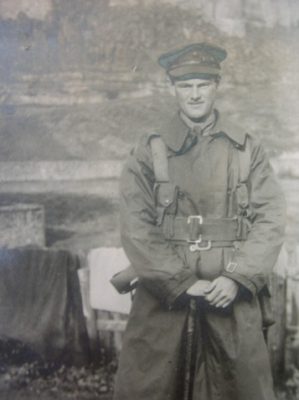
30 Mar 1918 - 12 Apr 1918 - Lt (Temporary Capt) John Vessey Gregory
Awarded MC for conspicuous gallantry and devotion to duty at Trou Bayard, Pont Levis, Pont Le Meuse, Neuf Berquin, and Vieux Berquin in the Estaires district. During the period 9th to 12th, he commanded his Battalion, and through his coolness and clever leadership his men were able to put up a very spirited resistance against repeated enemy attacks.
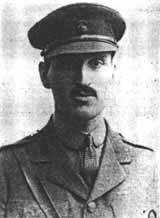
- . - . 1915 to 27 May 1918 - Lt Colonel Bertrand Dees Gibson
Lt Col Gibson joined the old 1st Volunteer Battalion in 1900, and after passing through the Musketry Course at Hythe, was appointed Musketry Instructor to the Battalion. In 1906, he became Hon. Secretary to the Northumberland Rifle Association. He obtained his majority in 1914, and went to the front with his Battalion in 1915, where he speedily rose to the command of the Battalion as Lieut Col., a position he held for nearly three years. He was invalided home last winter suffering from neuritis but returned to the front last April, and was killed leading his men on the 27th May last. His Brigadier General writes; -
" He was the bravest of the brave and a soldier in whom I had complete confidence, and I have seldom met a man with more commanding power, greater determination or self confidence."
To his widow and children we beg to tender our sincerest sympathy. (St Georges Gazette - 31st May 1918).
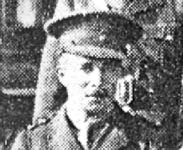
27 May 1918 - 10 Nov 1918 - Lt Col. John Ridley Robb
7 Feb 1920 - 26 May 1922 The Robb brothers were born in Hexham and educated at George Watson’s Boy’s College in Edinburgh, where all three served in the school Officer Training Corps. In 1907 William was gazetted as a 2nd Lt in the 1st Volunteer Battalion, NF and John Ridley joined the 4th NF in March 1909. Both were promoted to full lieutenant in June 1910, then captain in Dec 1912. They were mobilised in August 1914 and served to the end of the war.
John took charge of the battalion when Colonel Gibson was killed on the 27th of May and was the Commanding Officer for the next four years. At the end of the war he returned home to run the family business.
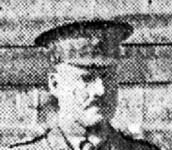
May 1922 - 26 May 1927 - Bt Col. Charles Osborne Provis Gibson
Charles Gibson was born in Newcastle on October 1876 and educated at Uppingham School and Oxford University. He played rugby as a forward for school and university, then for Northern, the Barbarians and Northumberland teams. On one occasion in 1901 he played for England in a test match against Wales. His brothers, George Ralph Gibson and Thomas Alexander Gibson were both Barbarians and international rugby players. Gibson was a solicitor admitted to the bar in October 1904 and practised with the firm of Clayton & Gibson, No7 Grey Street, Newcastle. His professional colleagues were William Waymouth Gibson, and John Ernest Gibson. Charles was commissioned in the 4th NF on 16th September 1914, having trained with the Uppingham School Contingent (Junior Division) of the Officers Training Corps (OTC). He was a staff Capt with the 62nd Infantry Bde in November 1915. He was awarded the Military Cross on the 3rd of June 1916, ‘Mentioned in Despatches’ in 1915 and 1918 and wounded in France on the 27th of May 1918. Staff Capt with the Cromarty Garrison in January 1919. (Solicitors War Memorial Fund, 1920)
Charles died aged 55 on the 9th of November 1931 in Stocksfield, Northumberland (Tilley, 2007) . His grave is located in the grounds of Bywell Castle
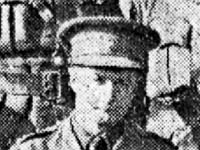
27 May 1927 - 26 May 1932 - Bt Colonel Bernard Cruddas
Bernard was born on the 1st of January 1882 in Stoke Bishop/Barton Regis near Bristol, Gloucestershire and educated at Winchester College. His father was from North Shields, but his mother was a local from Bristol. He was commissioned into a volunteer battalion of the North Staffordshire Regiment in 1899, but the following year transferred to the Regular Army and the Northumberland Fusiliers. The 1901 Census shows him at Strensall barracks near York. Bernard was transferred from the 1st NF to the 4th NF on …….. and served as the adjutant until …., whereupon he was transferred to …… In 1914 Bernard was living at The Lea, Riding Mill. (Kelly's, p. 97). Bernard was awarded the Distinguished Service Order during WW1.
His daughter Evelyn Margaret Cruddas was born in 1919
He was elected as a Conservative Member of Parliament (MP) for Wansbeck at the 1931 general election, and returned at the 1935 election. He stood down in 1940. Bernard was High Sherrif of Northumberland in 1942 and living at Middleton Hall, Morpeth. Bernard died on the 23rd of December 1959. His wife, Dorothy Wilkinson died in 1964 and daughter in 2001 at Hexham.
